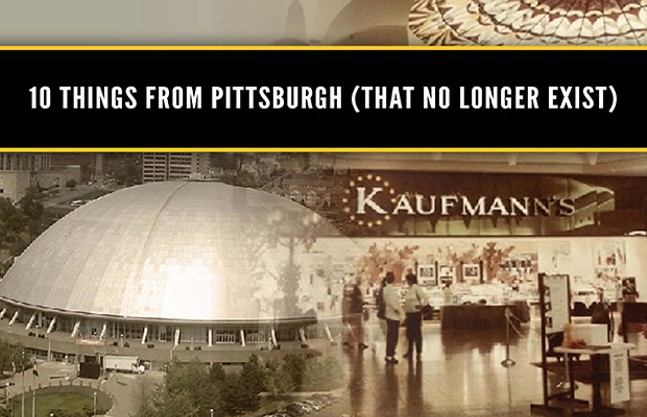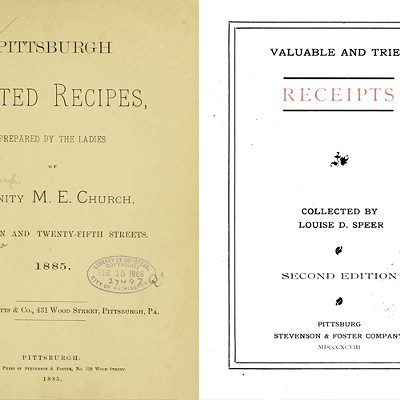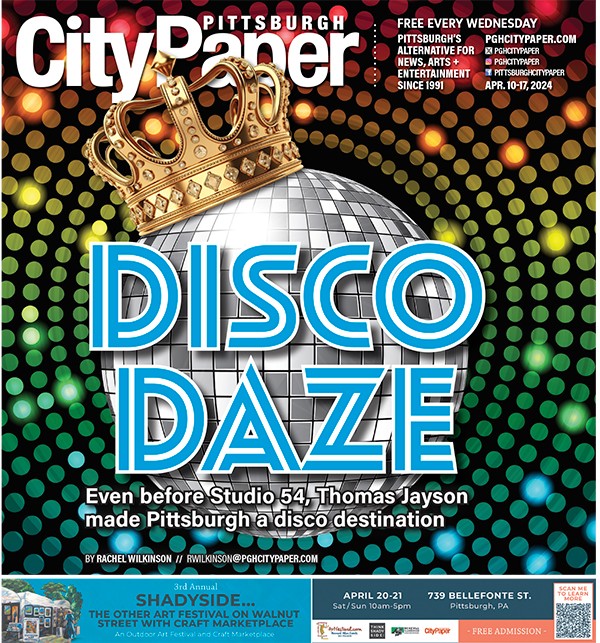Tuesday, March 6, 2018
Ten Things From Pittsburgh (That No Longer Exist)
Parting is Such Sweet Sorrow
1. Civic Arena (Mellon Arena)
Constructed in 1961, the concept for the Civic Arena was developed by department store owner Edgar J. Kaufmann. It was the first retractable roof venue for major-sports in the world, and it covered 170,000 square feet. The building was constructed from Pittsburgh steel and was supported by a large arm on the exterior. In 2001, the roof was closed permanently. Although the Civic Arena hosted concerts, political rallies and religious gatherings, it's best known for being home to the Pittsburgh Penguins. The arena was affectionately called the Igloo. Currently, the space is being used as a parking lot for the PPG Paints Arena, but there are plans to redevelop the space as an entertainment complex.
2. Three Rivers Stadium
From 1970 to 2000, Three Rivers Stadium hosted football and baseball games in the city of Pittsburgh. It was home to the Pittsburgh Pirates and the Pittsburgh Steelers. In 1971, Three Rivers Stadium hosted the World Series. Another relic of the past, the Pittsburgh Maulers of the United States Football League, played at the stadium from 1983 to 1984. After its closing, the Pittsburgh Pirates and Pittsburgh Steelers moved into PNC Park and Heinz Field, respectively. The stadium lives on through individuals that purchased seats before demolition, and you may even discover one at your neigborhood restaurant or bar.
3. Steel Industry Dominance
While some steel mills still operate in the Pittsburgh area, there's no denying that the steel industry has largely moved away from Pittsburgh. A combination of factors led to the steel industry decline in Pittsburgh: cheaper labor overseas, issues with wage cuts and reforms, depleting coke and iron ore deposits, and issues with unions and management. The decline caused a depression in the Pittsburgh area during the 1980s marked by high unemployment and underemployment. Although the steel industry decline had a negative impact on the city's economy, Pittsburgh ultimately recovered and diversified. In many ways, the steel decline was a boon to the city, because it contributed to its development in other industries such as medicine and science.
4. The Old Mill
Kennywood has seen many a ride come and go, but one well-remembered ride of the past was The Old Mill. The Old Mill was constructed in 1899, but 1901 is the date cited by most sources as the ride's official public debut. The water ride was propelled by a large paddle wheel and had a small hill at the end. It was unofficially called the “Tunnel of Love." In 2004, the Old Mill was revamped as Garfield's Nightmare, but many complained that the ride lacked the spooky charm of its predecessor. Although the building remains intact, the Garfield redesign just doesn't hold the same nostalgic weight as The Old Mill.5. Kaufmann's
Kaufmann's was a department store that was established in Pittsburgh, Pennsylvania. It was owned by the prominent businessman Edgar J. Kaufmann. At its prime, the chain had 59 stores in five states. On February 1, 2006, Macy's attained ownership of the retail chain and on Sept. 9 of that same year Macy's retired the Kaufmann's name. In 2015, Macy's closed and sold the iconic Pittsburgh store for redevelopment due to company reorganization. Many fondly remember Kaufmann's as an elegant department store. Kaufmann's took much pride in its store layout and design. The department store had iconic Christmas decorations that are well remembered by Pittsburgh natives.
Tags: pittsburgh , history , forgotten , remember , remember this , nostalgia , nostalgic , vintage , retro , old , back in the day , CP Extra , Image















